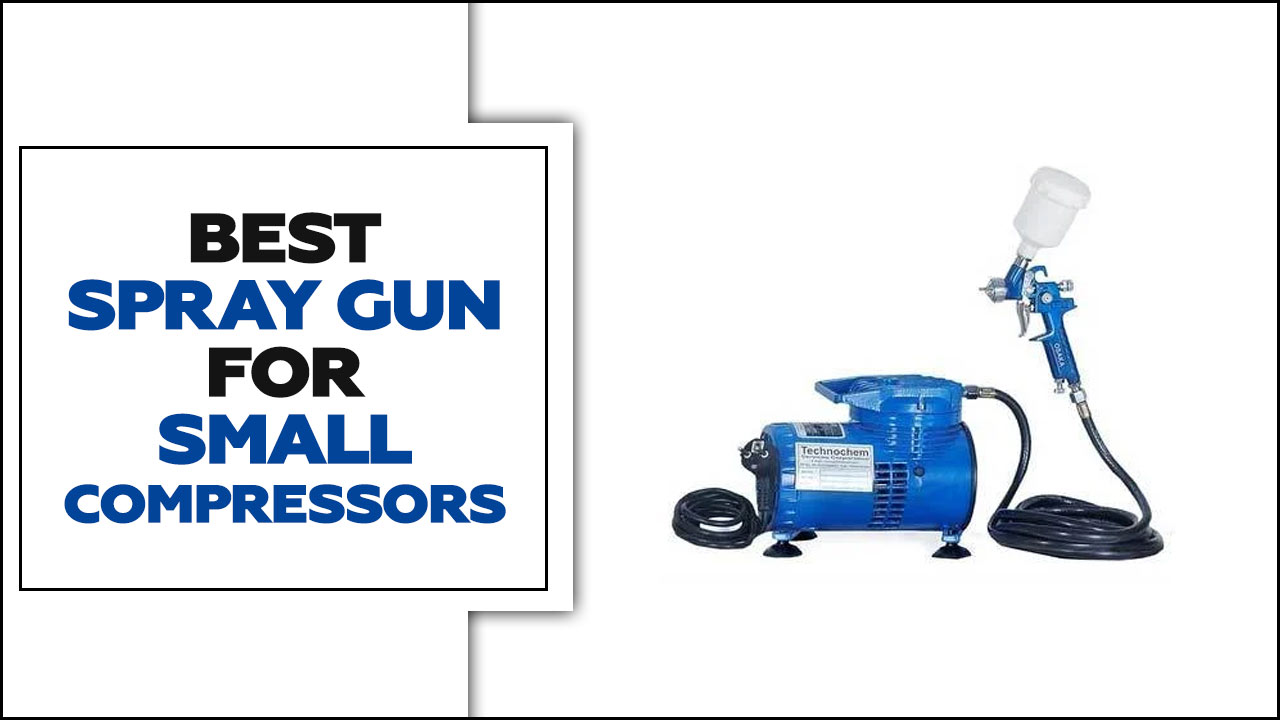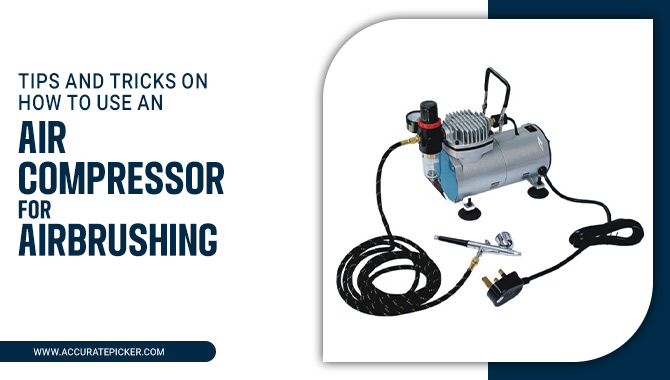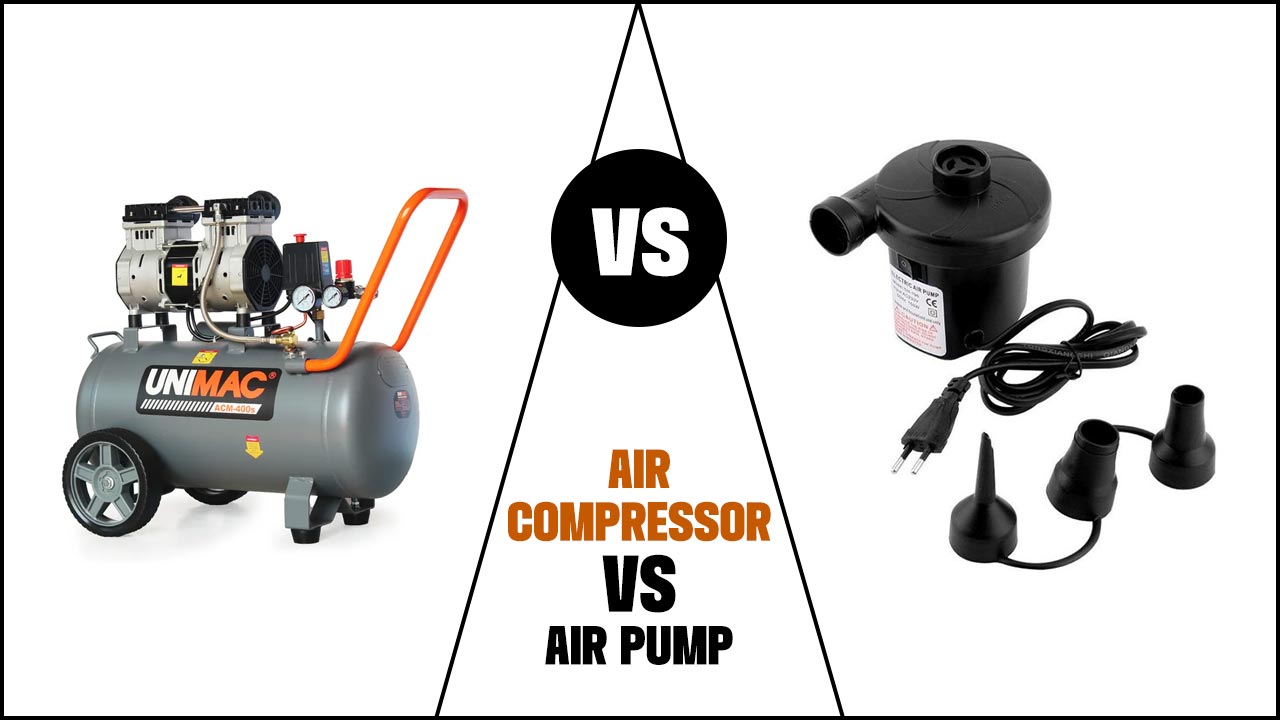If you have an air compressor, it’s essential to know how to drain water from an air compressor tank. One of the most important tasks is draining the water from the tank regularly.
To drain the water from the air compressor tank. Start by turning off the compressor and unplugging it from the power source. Locate the drain valve at the bottom of the tank and attach a hose to it. Place the other end of the hose in a bucket or container.
Slowly open the drain valve and let the water flow until it stops. You may need to tilt the compressor slightly to ensure all the water drains out. Once the water has completely drained, close the valve and remove the hose. It’s also a good idea to clean the tank and check for any signs of damage or wear.
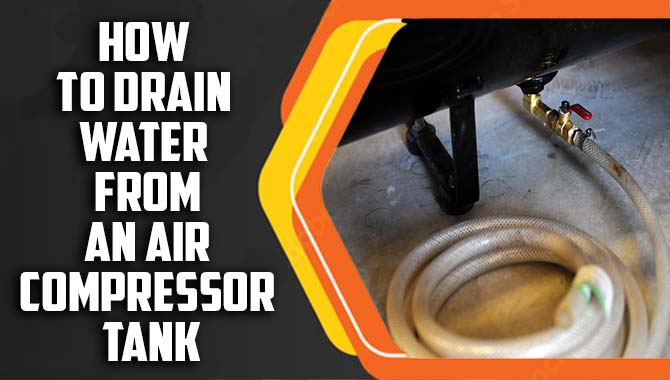
What Is An Air Compressor Tank?
An air compressor tank is a storage container that holds compressed air, which is generated by an air compressor. It is typically made of sturdy materials like steel and is designed to withstand the pressure created by compressed air.
The tank allows for the accumulation of compressed air. This can use for various purposes, such as powering pneumatic tools, inflating tires, or operating machinery that requires compressed air.
Importance Of Draining Water From Air Compressor Tanks
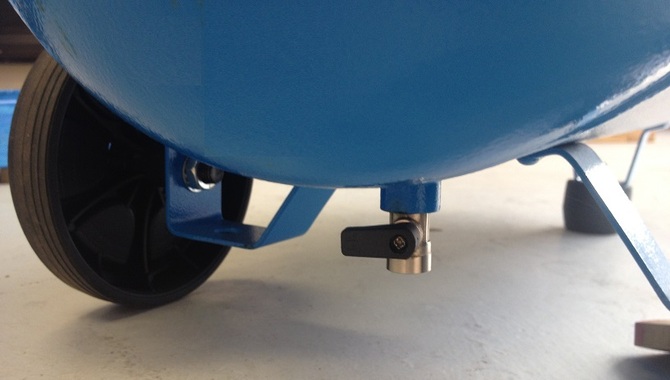
The importance of draining water from air compressor tanks you cannot overstate. Water accumulation is a common issue in all air compressor tanks, and it can cause significant damage to the equipment if left unchecked. Water can cause rust, corrosion, and even damage to the compressor’s internal components.
This can lead to reduced efficiency, decreased lifespan, and costly repairs. The water can also mix with the compressed air and cause contamination in the pneumatic system, affecting the output quality.
Draining water from the air compressor tank is a simple yet effective solution to prevent these issues. Regular draining of the tank will remove accumulated water and ensure the compressor runs optimally. It is recommended to drain the tank after each use, especially in humid environments, to prevent moisture buildup.
Overall, neglecting to drain water from the air compressor tank can lead to costly repairs, decreased efficiency, and reduced equipment lifespan.
How To Drain Water From An Air Compressor Tank Step By Step
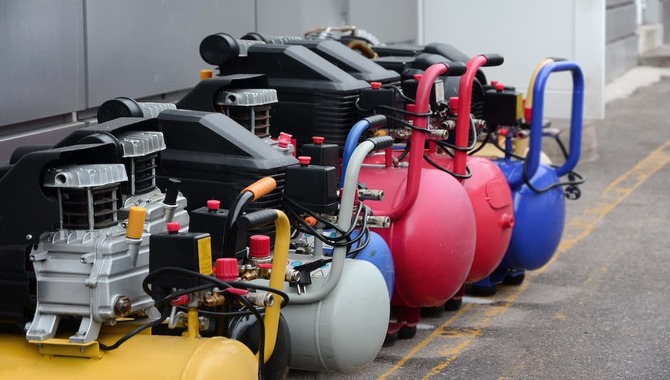
To drain water from an air compressor tank, consult the manufacturer’s instructions or the owner’s manual for specific guidance. The process involves releasing the air pressure, locating the drain valve at the bottom of the tank, opening the valve to allow the water to drain, and closing the valve once the water has been fully drained.
It’s recommended to perform this task regularly, such as after each use or at least once a month, depending on the frequency of compressor usage and environmental conditions. Here is a step-by-step guide on how to drain Water from an air compressor tank
- Safety first: Before starting any maintenance or draining procedures, ensure the air compressor is turned off and unplugged. Allow it to cool down for a few minutes to avoid potential hazards.
- Locate the drain valve: Find the drain valve on the bottom of the air compressor tank. It is usually a small valve or petcock.
- Prepare a container: Place a suitable container or bucket beneath the drain valve to collect the water and moisture that will be drained.
- Open the drain valve: Slowly and carefully turn the drain valve counterclockwise using a wrench or pliers. Be cautious not to force it open, as it may be tight due to sediment or debris buildup.
- Drain the tank: Allow the water and accumulated moisture to drain completely into the container. You may notice a hissing sound as the air pressure is released.
- Close the drain valve: Once all the water has been drained, carefully close the drain valve by turning it clockwise until it is securely closed.
- Perform a visual inspection: Take a moment to inspect the drain valve and the surrounding area for any signs of leaks or damage. If you notice any issues, it may require further attention or repairs.
- Test the compressor: Plug in and turn on the air compressor. Monitor its operation to ensure it is functioning correctly.
Safety Precautions When Draining Your Air Compressor Tank
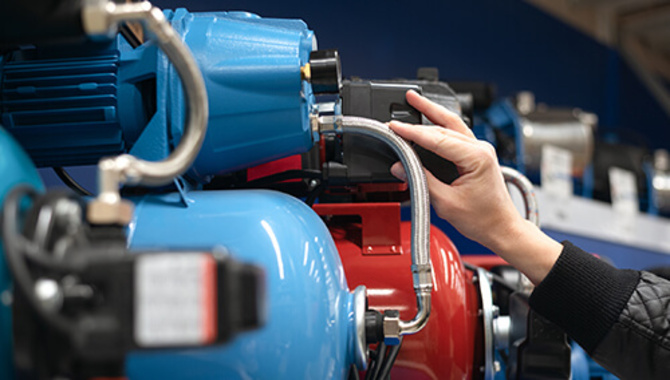
Safety is of utmost importance when working with any machinery or equipment, and the same goes for air compressors. Draining the air compressor tank is an essential task that ensures the compressor functions optimally and prevents any potential hazards from occurring.
However, taking the necessary precautions when draining your air compressor tank is crucial to avoid any accidents or injuries.
- Always shut off the compressor and unplug it from the power source before beginning the draining process. This will prevent any accidental start-ups that could cause harm to you or those around you.
- Open the safety valve or turn on the air release valve to release all pressure from the tank. This will prevent any explosions or other hazards from occurring when draining the tank. Additionally, make sure to wear appropriate safety gear, such as gloves and safety glasses, to protect yourself from any potential debris or flying objects.
- Always use a suitable container to collect the drained water or oil and dispose of it properly according to local.
Do You Need Drains For My Compressed Air Piping System?
When designing a compressed air piping system, one question often arises whether or not drains are necessary. The answer is a resounding yes. Drains play an essential role in any compressed air system by eliminating moisture and other pollutants from the airlines. Failure to include proper drainage can lead to a number of issues, such as corrosion, reduced efficiency, and even damage to equipment.
There are a variety of different types of drains available, each with its own advantages and disadvantages. One common type is the automatic drain, which uses a float or timer to open and close the drain valve as needed. This type of drain is particularly useful for systems that produce a lot of condensates, as it can help to prevent overflow and keep the airlines dry.
Another option is the manual drain, which requires periodic opening and closing to remove the accumulated moisture. While this type of drain is less expensive than automatic drains.
How Do You Drain Water From My Air Compressor?
Air compressors are essential in various industries, from construction to automotive repair. However, after extended use, it is common for moisture to accumulate inside the tank.
Moisture can cause rust and corrosion, which can lead to damage to the tank and parts and, ultimately, compromise the performance of the air compressor. Regular draining of the moisture from your air compressor is necessary to prevent this. So, how do you drain water from an air compressor?
Ensure you turn off and unplug the air compressor as the first step. Next, locate the tank’s drain valve at the bottom of the tank and place a container or bucket underneath the valve. Slowly turn the valve counterclockwise and allow the water to drain from the tank. Draining the water after every use is essential to prevent it from accumulating in the tank.
How Often Do You Need To Drain My Air Compressor Or Receiver Tank?
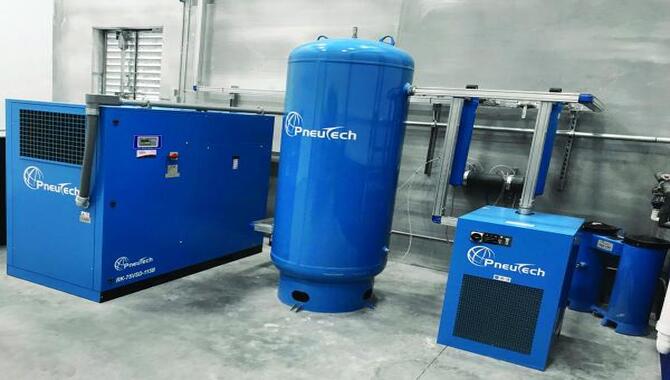
If you own an air compressor or a receiver tank, one of the most important things you need to do is drain it regularly. But how often should you do it? The answer depends on a few factors, including the size of your tank, the humidity level in your area, and how often you use your compressor.
As a general rule, it’s recommended that you drain your tank at least once a month. This will help prevent the buildup of moisture, rust, and other debris that can affect the performance of your compressor and shorten its lifespan.
However, if you live in a particularly humid area or if you use your compressor frequently, you may need to drain it more often. Some experts recommend checking your tank’s moisture level daily and draining it as needed. To drain your tank, simply turn off your compressor, open the drain valve, and let the water and debris flow out.
How Do You Drain Water From My Air Dryers And Receiver Tanks?
Air dryers and receiver tanks play a crucial role in maintaining compressed air quality in industrial settings. However, these components accumulate moisture over time, which can negatively impact their performance. To prevent this, regularly draining the water from air dryers and receiver tanks is important. But how do you do it?
The process of draining water from air dryers and receiver tanks is relatively simple. First, locate the drain valve on the bottom of the tank or dryer. Next, attach a hose to the valve and place the other end in a safe location where the water can be discharged.
Finally, open the valve and let the water drain out completely. Note that you should do this process regularly and on a schedule to prevent water buildup and potential damage to the equipment.
What Kind Of Drain Valves Should You Use In My Compressed Air System?
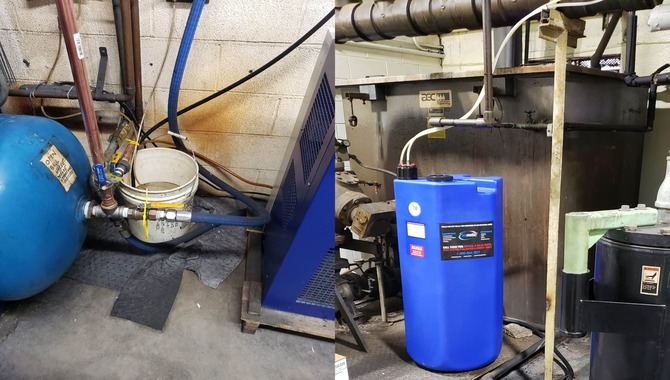
Do not overlook drain valves as an important component when dealing with compressed air systems. The type of drain valve you use will depend on several factors, such as the size of your system, the amount of condensate it produces, and the type of compressor you have. There are three main types of drain valves: manual, automatic, and timed.
Manual drain valves require someone to open the valve to release the condensate physically. Automatic drain valves use sensors to detect when the condensate has built up and automatically open and close to release it. Timed drain valves operate on a set schedule and open and close at predetermined intervals.
We recommend automatic or timed drain valves for compressed air systems in most cases because they are more efficient and require less maintenance. However, manual drain valves may be a good option for smaller systems or those with lower condensate levels. Choosing a drain valve that is appropriate for your system and to ensure is important.
Conclusion
Regularly draining water from an air compressor tank is an important maintenance task that ensures optimal performance and longevity of the compressor. Knowing how to drain water from an air compressor tank is essential.
Following the steps outlined in this comprehensive guide can help you effectively drain water from your compressor tank and prevent costly repairs or replacements. Always put safety first and make sure you turn off and depressurize the compressor before attempting any maintenance tasks.
By implementing the guidelines discussed in this article, you can keep your air compressor running smoothly and efficiently for years to come.
FAQs
1.Why Is Draining Water From An Air Compressor Tank Important?
Ans: Draining water from the tank prevents moisture buildup, which can lead to corrosion, reduce efficiency, and damage the compressor components.
2.How Do I Know When It’s Time To Drain The Tank?
Ans: If you notice water coming out of the air when using your tools or if the tank feels heavy, it’s a sign that the tank needs to be drained.
3.Can I Drain The Tank While The Compressor Is Running?
Ans: No, you should never attempt to drain the tank while the compressor is running. Always turn off and unplug the compressor before draining.
4.Where Is The Drain Valve Located?
Ans: The drain valve is typically located at the bottom of the tank. It may be a small valve or petcock that can be opened to release the water.
5.What Tools Do I Need To Drain An Air Compressor Tank?
Ans: You may need a wrench or pliers to open the drain valve and a container or bucket to collect the water being drained.


